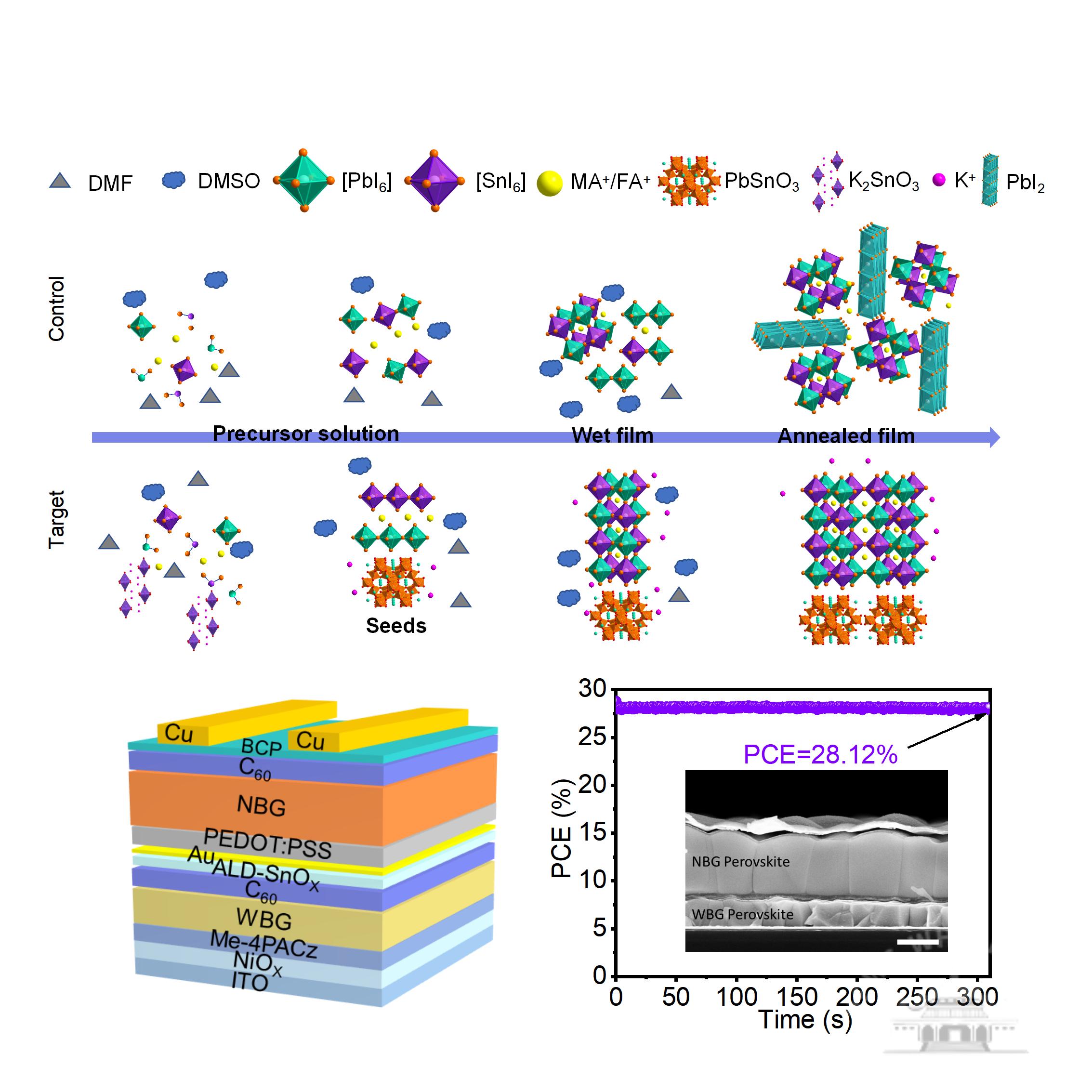A research team led by Professors Ke Weijun and Fang Guojia at Wuhan University (WHU) has made a significant breakthrough in perovskite tandem solar cells. Their findings have been published in Nature Communications and Advanced Materials.

In situ construction of ABX3 seed framework and regulate nucleation and crystallization.
Perovskite solar cells have gained attention due to their low cost, easy processing, and high power conversion efficiency. While single-junction perovskite solar cells have surpassed 27 percent efficiency, further improvements face limitations. All-perovskite tandem solar cells, which combine wide-bandgap and narrow-bandgap sub-cells, have a theoretical efficiency of up to 45 percent, making them a research focus.
The team introduced seed-induced crystallization technology, incorporating potassium stannate (K₂SnO₃) into the perovskite precursor solution to generate PbSnO₃ templates. This method significantly enhanced the quality of narrow-bandgap tin-lead perovskite films, improving charge carrier transport and achieving a 23.12 percent efficiency for single-junction cells and 28.81 percent for tandem devices.
The researchers also developed a glycine hydrochloride modulation strategy to improve wide-bandgap perovskite film quality, achieving 19.97 percent efficiency for 1.77 eV bandgap cells and 26.87 percent for tandem devices.
This study provides new insights into developing high-efficiency perovskite tandem solar cells and is expected to accelerate their commercialization.
Paper links:
Nature Communications: https://www.nature.com/articles/s41467-025-57195-w
Advanced Materials: https://advanced.onlinelibrary.wiley.com/doi/10.1002/adma.202414790